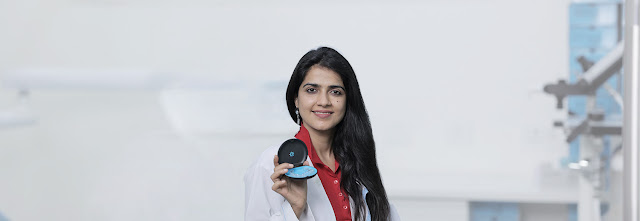6 Problems that Invisalign Corrects
If one thinks braces are the only way to repair orthodontic issues, they are wrong. Invisalign clear aligners are an alternative therapy for bite difficulties, giving individuals a beautiful, straight smile they can flaunt. Invisalign aligners are invisible and are tailored to the teeth. Individuals can take them out to eat and drink, so Invisalign does not require any dietary adjustments. Several problems can be corrected with Invisalign.
To discuss the problems that can be corrected with Invisalign, we have created this informative post by taking references from a renowned orthodontist, Dr. Ravneet Kaur. The expert orthodontist is the founder of Smiles by Dr. Ravneet Clinic and can be consulted for getting the best Invisalign in Gurgaon. Before we proceed, let us begin by discussing more about Invisalign.
Invisalign: Overview
Invisalign is a world-class teeth-straightening method that utilizes comfortable plastic aligner trays to improve the smile. One gets a custom-made series of aligners that move the teeth in a gentle position using gentle force. One wears the Invisalign aligners for 20-22 hours per day and can remove the aligners to eat meals or to clean the teeth. When one follows the treatment plan as advised by the orthodontist, Invisalign treatments work 50% faster than other orthodontic procedures.
What Problems Can Be Corrected With Invisalign?
Invisalign clear aligners can help in correcting a range of dental concerns, such as:
1. Over and Underbites
Alignment issues are one of the vital reasons why people opt for Invisalign. If one has front upper teeth that overlap the lower front teeth, they have an overbite. Most people have a slight problem of overbite, which affects their dental health as well as overall appearance. It may even cause uneven tooth wear or excessive jaw pain for some individuals.
When one has an underbite, they have the opposite problem. Their lower front teeth sit in front of the upper teeth, and this misalignment affects their ability to chew food or speak clearly. Invisalign aligners help correct over and underbites by shifting the misaligned teeth in a proper position, which results in a straighter and more functional bite.
2. Crossbites
If one has crossbites, the teeth in the upper and lower jaws do not line up. But even slight crossbites lead to tooth damage, receding gum lines, and other gum problems. Fortunately, the Invisalign straightening system shifts misaligned teeth into the correct position by slightly changing the individual's teeth. This way, it can address each tooth that causes problems with the crossbites.
Are you experiencing crossbites? Consult Dr. Ravneet Kaur, a popular orthodontist in Gurgaon, to get crossbites treated at Smiles By Dr. Ravneet Clinic.
3. Open Bites
This alignment issue means the upper and lower teeth do not meet when the mouth is closed. An open bite often develops from thumb sucking or by using a pacifier. However, it can also be faced by individuals who use objects between their teeth, such as pen or pencil. Like any other alignment problem, having an open bite not only affects one’s appearance but can also cause a lisp or can interfere with chewing or proper biting, which often leads to damaged back teeth.
4. Crowding
If one has crowded teeth, they may appear to twist, overlap, or get pushed in front or behind neighboring teeth. It is also common for the teeth to not be evenly spaced along the jaw. If one has overcrowded teeth, it can make good dental hygiene an issue. This is because it is difficult to clean the tooth surfaces with the brush, which makes flossing difficult. As a result of this, bacteria and plaque have more chances of accumulating, and they are more prone to tooth decay and gum diseases. If one has crowding, an expert orthodontist can help create normal spacing between the teeth so that the smile looks straighter and aligned, and dental hygiene becomes easier.
5. Gapped Teeth
Unlike crowded teeth, gapped teeth have a lot of space between them. This can also lead to hygiene problems and dental decay if there is more room for food to get stuck between the gaps. Gapped teeth can also make one feel conscious about their smile. However, with Invisalign, one can get these gaps corrected. But if the tooth gaps are too large, the orthodontists will recommend other options.
6. Crooked Teeth
The orthodontists also use Invisalign to straighten crooked teeth, besides alignment and spacing issues. This problem often develops when there isn’t enough room in the jaw for all the teeth to fit properly. Even if one has crooked or rotated teeth, Invisalign could still provide effective solutions.
Note: One must understand that not only Invisalign offers the benefits we discussed above, but it also boosts one’s overall health. Poor oral health is often associated with severe diseases. Having crooked teeth can lead to health issues such as birth complications, Alzheimer’s disease, diabetes, endocarditis, pneumonia, and many more.
Having straight teeth makes it difficult for bacteria to grow between teeth. Misaligned teeth can trap bacteria and act as a breeding ground for the bacteria. Flossing and brushing are much better and easier with straight teeth and help one easily remove damaged bacteria rather than allowing them to gather and grow.
Final Takeaway
With Invisalign, one can correct misaligned teeth, prevent gum diseases, open bites, underbites, and crooked teeth, and achieve a perfect smile. Invisalign is transparent, so one does not have to feel self-conscious while attending social gatherings. They are a perfect option for individuals with misaligned teeth at any age. The treatment will begin after a consultation with an orthodontist who will scan the teeth and take X-rays to prepare a customized plan.
To avail the benefits of Invisalign clear aligners, one can make an appointment with an expert orthodontist, Dr. Ravneet Kaur, at Smiles By Dr. Ravneet Clinic.
Read More:




Comments
Post a Comment